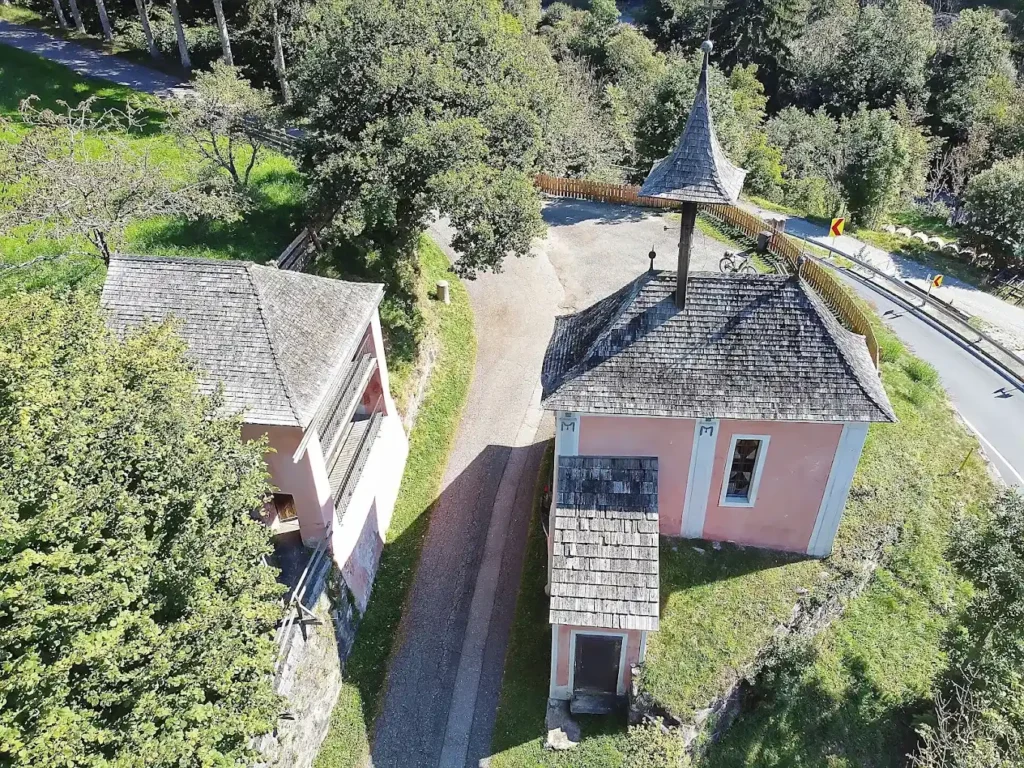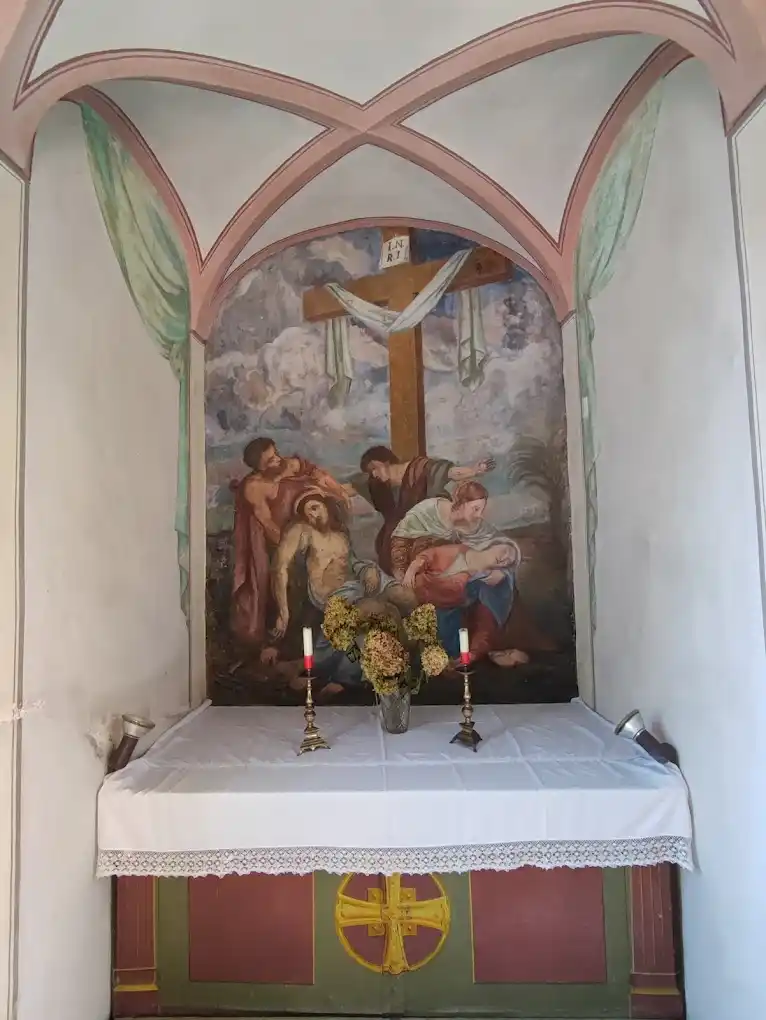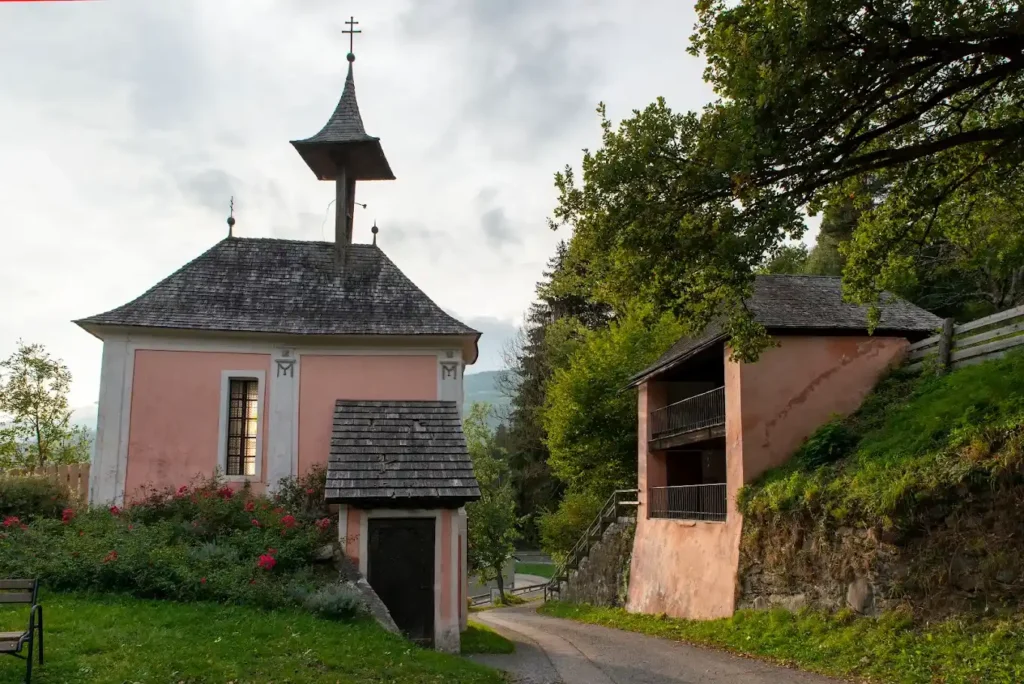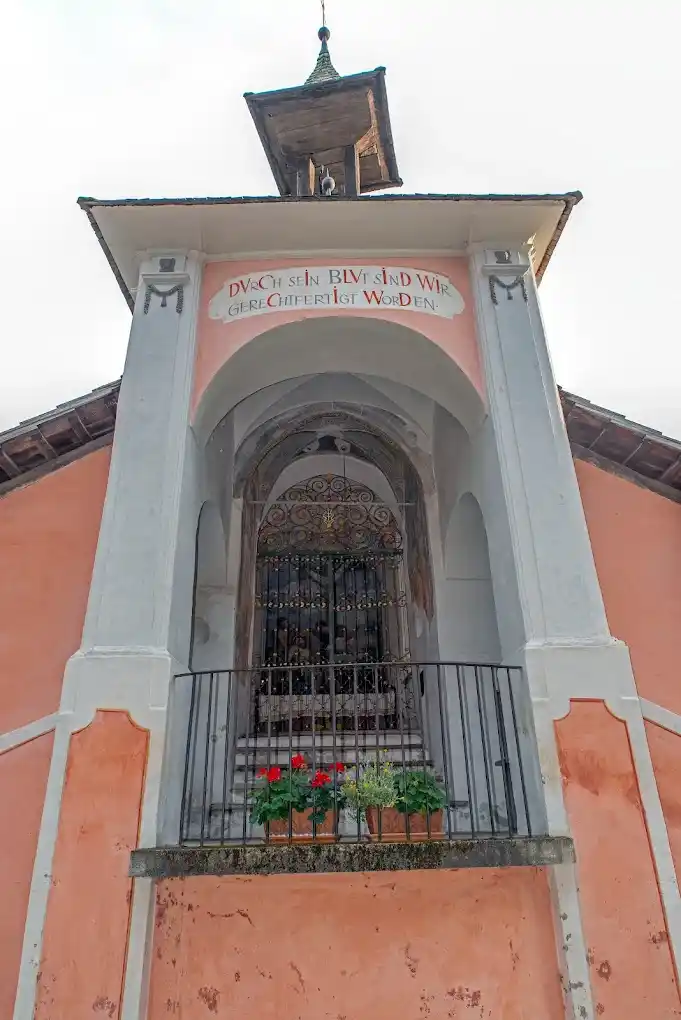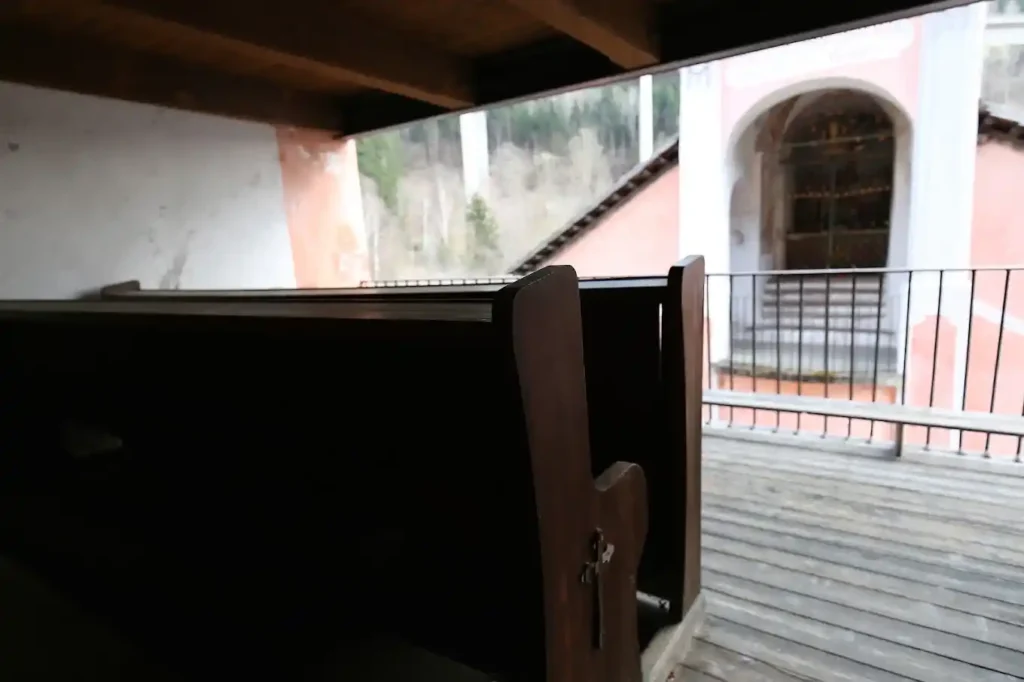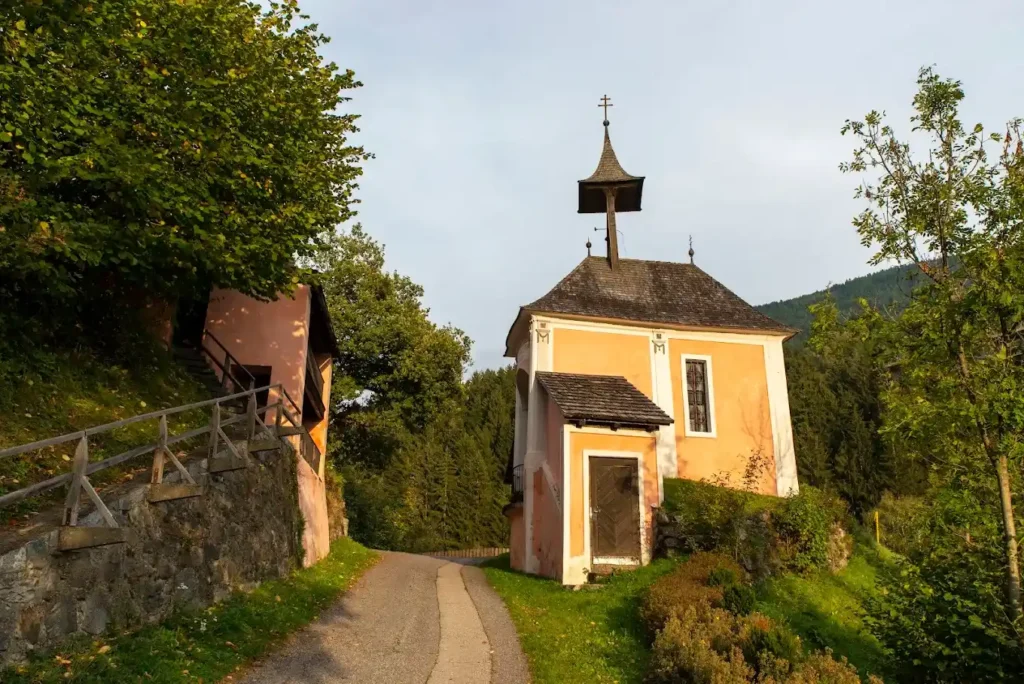In southern Austria, on the outskirts of the town of Gmünd, stands one of the country’s most unusual chapels: the Church of Saint Mary, popularly known as the Split Church. What makes it so unique isn’t its Baroque architecture or its old frescoes, but the fact that a road literally cuts through the building, separating the altar from the congregation’s pews.
From the outside, the church appears split in two: on one side, the area where the priest or vicar would deliver the sermon; on the other, across the road, the benches where the public would sit. This unusual layout invites you to imagine services interrupted by engine noise—or even worshippers leaning out of their car windows, as if attending a kind of drive-in church.
The story of this curious construction dates back to the 15th century. Originally, it was a roadside shrine where sermons were delivered outdoors to a standing congregation gathered in the street. At that time, the left side of the building didn’t exist—and, of course, there were no cars passing by. However, in the 17th century, a priest decided to offer his parishioners more comfort and shelter. He built a structure on the opposite side of the road, using the only available space on the steep and narrow terrain.
The result was a unique building: two separate halves divided by a road, yet forming a single house of worship. Over time, the road that once cut through it became a secondary route, as the main traffic was redirected via a bypass. Even so, it’s still possible to drive right through the middle of the church—making for a truly one-of-a-kind religious experience on wheels.
Inside, the church preserves historic elements like wall frescoes, a small altar, a few narrow wooden pews (with even less legroom than a budget airline), and a rope hanging from the ceiling, likely used to ring the bell. The congregation’s side includes two levels: a ground floor with rows of benches, and an upper level offering a higher view of the service—conditions permitting.
It’s not entirely clear whether regular masses are still held in this chapel (though many say they occur only during Easter processions, Rogation Days, and Pentecost Monday), but its value as an architectural curiosity and local heritage site remains intact. For some, it’s a symbol of ingenuity in the face of spatial limitations; for others, simply a charming footnote in Austria’s religious history.
Visitors to Gmünd can’t resist the full experience: driving slowly between the two halves of the church, as if receiving a blessing from behind the wheel. Because if there was ever a church designed for motorists, this would be the one to absolve your sins—with a smile and, perhaps, a couple of Bloody Marys at the local brewery.
